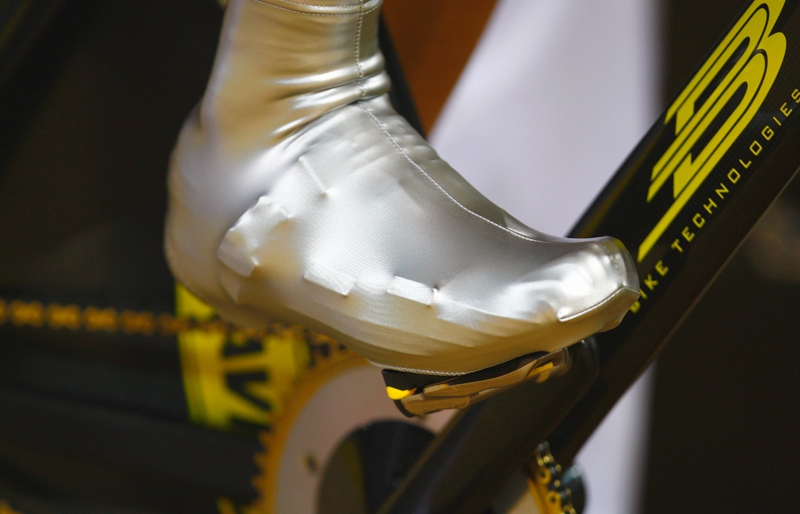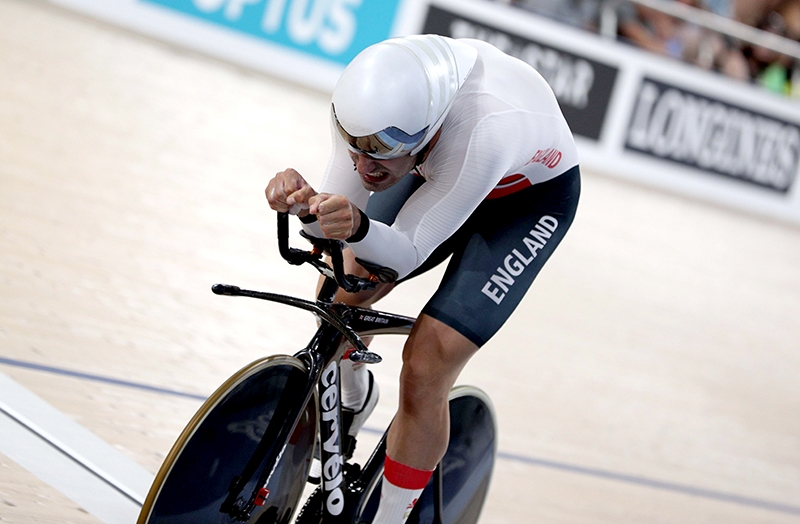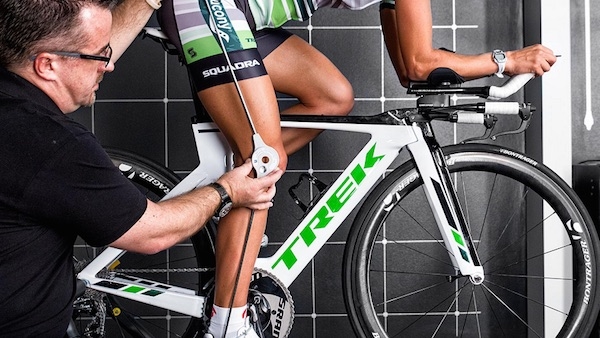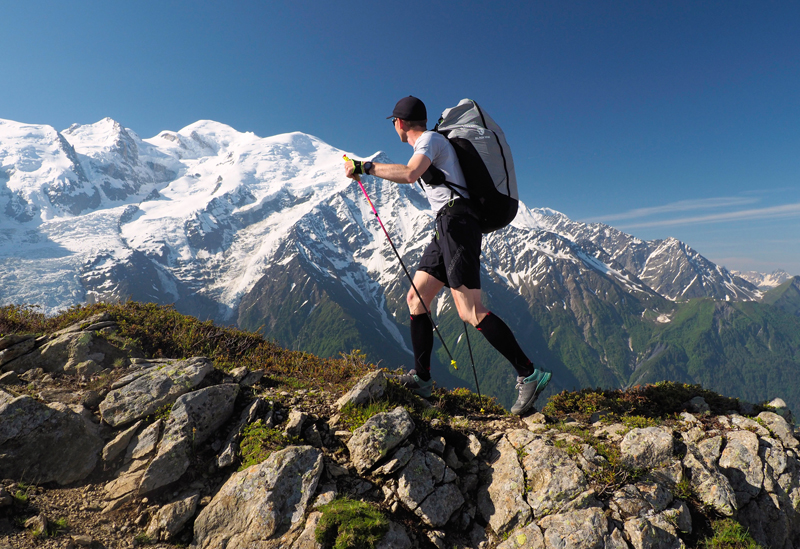You are viewing 1 of your 1 free articles. For unlimited access take a risk-free trial
Bumpy road ahead? Don't feel the pressure!
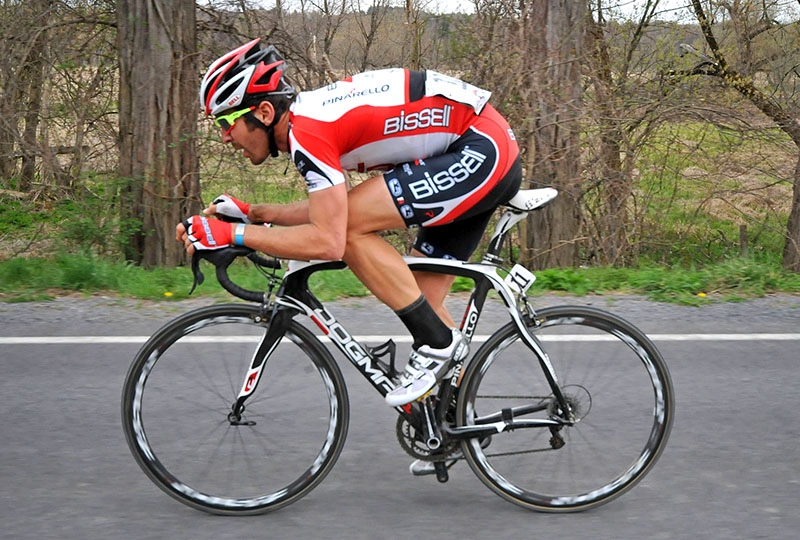
Although cyclists tend to talk of a ‘sore backside’ after hours in the saddle, it’s the perineum (the narrow area running forwards from the anus to the scrotum) that usually falls victim to pressure-induce trauma. The perineum lies just below a sheet of muscles called the pelvic floor muscles, which support the bladder and bowel. The perineum region is sensitive and vulnerable to injury because it contains blood vessels and nerves that supply the urinary tract and genitals with blood and nerve signals.
Feel the pressure
Compared to sitting in an ordinary seat, bicycle saddles are much narrower and smaller – an inevitable consequence of the need to allow an efficient pedalling action – ie with the feet aligned roughly under the hips. The smaller area means cyclists will experience more force per unit area (pressure), while the narrow design tends to transfer that pressure to the perineum area. To make matters worse, saddles are relatively bereft of cushioning, which means that jolts, impacts and general ‘road buzz’ are easily transferred from the bike to the rider, increasing the degree of trauma experienced.All of these factors can result in cumulative injury to the blood vessels, nerves, and muscles in the perineum, particularly for those cyclists spending many hours in the saddle. This can lead to various urogenital complications such as bladder control and sexual problems and erectile dysfunction (see box 1). The evidence also suggests that the problem is widespread – the majority of male cyclists will experience at least some urogenital symptoms at some point. For example, a very large review found that up to 91% of cyclists have experienced nerve entrapment syndromes, resulting in symptoms of genitalia numbness(1). In around 20% of cyclists, this was followed by erectile dysfunction. Although these symptoms tend to be temporary and reversible in the early stages, they can become chronic, and lead to more serious conditions such as infertility and prostatitis (inflammation of the prostate gland).
New research
Over the last decade or so, researchers have been looking at how altering saddle design can help reduce perineal damage in cyclists who spend long hours in the saddle. These designs include those with V-shaped grooves running longitudinally along the centre of the saddle, centre cut outs, and saddles with extra-wide designs, saddles with ‘cut-off’ noses and the use of gel inserts(2-4). Although the results have suggested that in some circumstances, these alternative designs can help reduce trauma, they don’t always seems to work for every cyclist. But now a brand new study looking at the role of the seatpost in trauma reduction has come up with very encouraging findings [Sex Med. 2018 Jun 20. pii: S2050-1161(18)30052-7].The aim of the study was to evaluate the relationship between vertical oscillation forces and perineal pressures among cyclists in a simulated laboratory setting. All the 39 subjects rode an indoor bicycle that could be adjusted to ensure each subject adopted the same riding position - a 60-degree torso angle, and a maximum knee angle at the bottom of the pedal stroke of 150 degrees (different riding postures can affect saddle pressures).
While the subjects pedalled, a lever system was then used to generate oscillation events of three progressively increasing magnitudes: 0.7g, 1.0g and 1.3g. The pressure experienced at the perineum was continuously measured using a pressure sensor on the bicycle saddle. This process was carried out in each of the following conditions:
- Stationary (not pedalling) with the standard seatpost.
- Pedalling with the standard seatpost.
- Stationary with a shock-absorbing seatpost (Suntour SP12-NCX Suspension Travel Seatpost – see figure 1).
- Pedalling with the shock absorber seatpost.
Figure 1: Suntour SP12-NCX Suspension Travel Seatpost

The findings
A key finding was that as the amount of oscillation increased from an average of 0.7g to 1.3g, the perineal pressure increased from 10.3% over baseline to 19.4% over baseline. Moreover, there was a strong linear relationship between the amount of oscillation and the increase in pressure at the perineum. Crucially however, when the cyclists rode with a seatpost shock absorber, the impact of the oscillations decreased by up to 53% in the stationary condition. During riding, the typical impacts of the shocks were reduced by around 12-18%; this is what you’d expect because when pedalling, your bodyweight is supported by your legs, which reduces the pressure between the saddle and the perineum - the harder you ride, the more your legs take the weight.The authors concluded that their study is one of the first to demonstrate that perineal pressure during cycling can be effectively reduced by using a shock-absorbing seatpost. They went onto conclude that cyclists who use this kind of seatpost design (and other shock-absorbing measures) are likely to experience reduced perineal micro-trauma, which in turn may improve cycling-associated perineal numbness and even erectile dysfunction.
Optimising YOUR bike set up
It’s true that the right saddle design and seatpost choice can help reduce saddle soreness. However, there’s much more to happy cycling than the right choice of equipment. The correct bike set up and riding posture is absolutely vital too – not just for saddle health, but for back and knee health as well. These are topics we’ve discussed at length in Sports Performance Bulletin, so if you want to make sure that this summer is fully of happy and pain-free cycling memories, you absolutely need to read the articles below!Andrew Hamilton, Sports Performance Bulletin editor
References
- Eur Urol. 2005 Mar;47(3):277-86
- Eur Urol. 2002 Feb;41(2):139-43
- J Sex Med. 2008 Aug;5(8):1932-4
- Appl Ergon. 2014 Jul;45(4):1181-6
Newsletter Sign Up
Testimonials
Dr. Alexandra Fandetti-Robin, Back & Body Chiropractic
Elspeth Cowell MSCh DpodM SRCh HCPC reg
William Hunter, Nuffield Health
Newsletter Sign Up
Coaches Testimonials
Dr. Alexandra Fandetti-Robin, Back & Body Chiropractic
Elspeth Cowell MSCh DpodM SRCh HCPC reg
William Hunter, Nuffield Health
Keep up with latest sports science research and apply it to maximize performance
Today you have the chance to join a group of athletes, and sports coaches/trainers who all have something special in common...
They use the latest research to improve performance for themselves and their clients - both athletes and sports teams - with help from global specialists in the fields of sports science, sports medicine and sports psychology.
They do this by reading Sports Performance Bulletin, an easy-to-digest but serious-minded journal dedicated to high performance sports. SPB offers a wealth of information and insight into the latest research, in an easily-accessible and understood format, along with a wealth of practical recommendations.
*includes 3 coaching manuals
Get Inspired
All the latest techniques and approaches
Sports Performance Bulletin helps dedicated endurance athletes improve their performance. Sense-checking the latest sports science research, and sourcing evidence and case studies to support findings, Sports Performance Bulletin turns proven insights into easily digestible practical advice. Supporting athletes, coaches and professionals who wish to ensure their guidance and programmes are kept right up to date and based on credible science.
